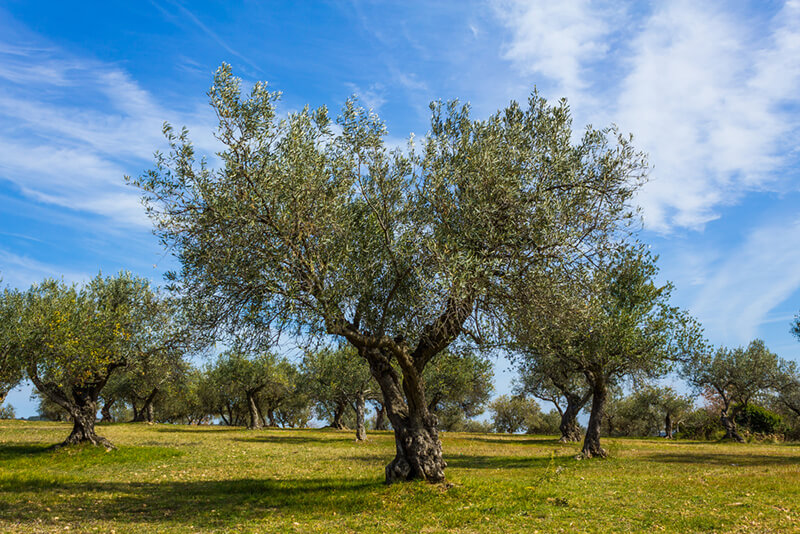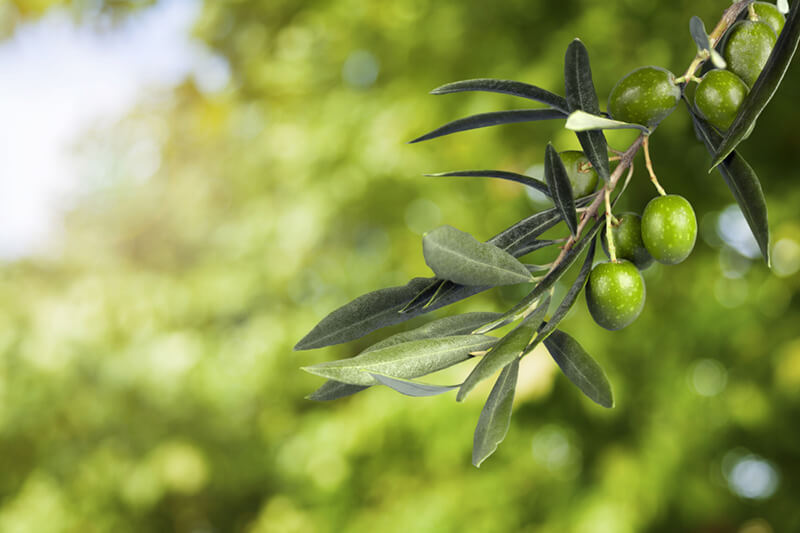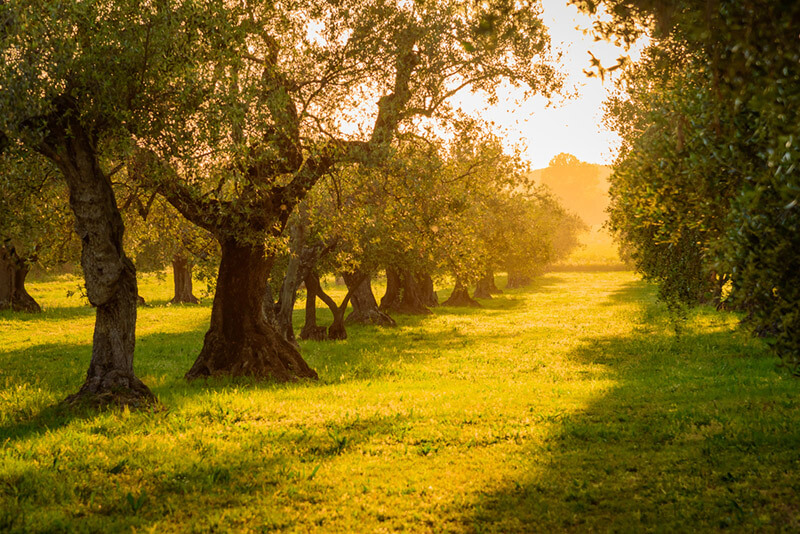
Are Olive Trees Right For Your Yard?
Published: 15/08/2022 | Updated: 29/08/2023
When it comes to landscaping you might be looking at different types of trees and bushes. Trees are an incredibly versatile and manageable way to add vegetation to your yard, shade from the harsh summer sun, privacy, or simply to indulge into the natural world.


Olive trees are beautiful, and why this variety is of our favorites for any backyard or front yard landscaping design. We created this fully inclusive guide on the glorious olive tree so you can get a better look into this beautiful plant with sustainable gardening.
Just like many trees and plants, olive trees give back all the love you’ve given them by producing olives every year (though fruitless olive trees are becoming more and more popular as well).. The olive tree's fruit is harvested well into the fall. It is a robust tree that allows for various clever processes that increase the production of olives and, consequently, of olive oil.
But are these trees a worthy addition to your yard design? And how do you care for olive trees?
Pros & Cons Of Olive Trees:
In order to determine if the olive tree (affectionately known as a symbol of peace) is the right fit for your yard, let's look at some of the pros and cons of having one.
Pros:
- Olive tree waste is a sustainable energy source that when burned produces 2.5 times as much heat as burning wood while emitting no harmful smoke. Gardens are fertilized with its ash.
- Appearance. Even though the olive tree has a more simple leaf look, the wood and overall growth of the olive tree is truly a beautiful sight.
- Olive trees are surprisingly low maintenance trees. Olives are surprisingly low-maintenance plants that tolerate a wide range of soil conditions. The most crucial thing to keep in mind is to water properly. Overwatering olives is a big no since they detest being wet.
Once your olive is planted, it takes very little maintenance. For the first few years of its existence, you won't need to prune it, and even after that, it's advised that you only do it occasionally.
It requires very little maintenance as long as you give your Olive the proper quantity of water and protect it from cold weather!
- An olive tree's wood is resistant to deterioration.
- There are thousands of types of olive trees.
- Lifespan is generous when it comes to the olive tree as they normally live 300-600 years, some have even gone on longer than that.
- Olive trees can provide both shade and privacy depending on where the placement and quantity.
Cons:
- Olive trees prefer a hotter climate so unfortunately if your area has a more rough winter olive trees won't be the best option for you. The optimal climate for these trees is one with a lengthy, hot summer. Some experts believe this is because conditions that are hot and dry can deter natural pests.
- Olive trees start producing fruit around their 5th birthday so it’s best to purchase a more mature plant unless you’re open to waiting. Around the 7th or 8th year is when olive trees start their full production era.
Everything You Need To Know About Olive Trees

Plant Type : Evergreen Fruitless or Fruit Bearing Tree
Ideal Climate : Olive trees thrive in climates with long, hot summers and short, cool winters. They require a two-month period of cool weather during which they must dormancy, with optimal temperatures falling between 40° F and 50° F. A tree that is not covered, however, can be harmed or even killed by severe winter temperatures (below 20° F)
Sun Exposure : Full Sun
Height & Size : The olive tree has several branches covered in feather-like silver-green leaves and grows between 10 and 40 feet tall depending on the variety.
Rate Of Growth : Relatively slow, ranges from 1 to 2 feet per year.
Flower Type : In the spring, little golden and creamy white flowers blossom.
Foliage : Feather-shaped, having a lighter silvery white underside and a gray-green upper surface.
Fruit : The majority of fruits, also known as drupes, are green while young and develop a dark purple color when fully mature. However, they differ greatly in size, form, oil content, and flavor. Cultivars of fruitless olive trees bear blooms but little or no fruit.
Lifespan : 300-600 years. The longest living olive tree is 2000 years old!
Planting Olive Trees :
Ideal Planting Time :
The ideal planting time for olive trees is spring, when frost risk has passed, is the ideal time to plant. If you must plant in the Fall, this is only suggested in places where winter temperatures do not drop below 30° F, as newly planted trees are vulnerable to frost damage.
Conversely, we also don’t recommend planting during the sweltering summer.
Location :
To prevent stains from dropped fruit, plant far from paved surfaces and in full sun (8 or more hours daily) (unless growing a fruitless variety). Planting shouldn't be done in low regions where standing water collects. Olive trees cannot thrive in soil that is too wet.
Planting How-To :
To place the root ball's top just above ground level, dig a hole that is roughly the same diameter as the root ball but a little shallower. Don't fill the planting hole with compost or other organic material. A young olive tree has to acclimate to its native soil in order to experience robust root growth.
Pollination Needs :
Most olive trees may produce both male and female blooms on the same tree because they are self-fertile. Planting a tree of a different species close by and allowing them to cross-pollinate, however, will frequently improve fruit harvests.
Guide To Olive Tree Care :

- Soil Needs : Any well-drained soil will do. In dense clay soils, avoid planting.
- Pruning : Olive trees react well to pruning, but whether your main objective is to increase fruit output or improve aesthetics will frequently determine the quantity of pruning and the techniques you apply. Remember that olive trees bear fruit on the branches from the previous year, therefore if fruit is wanted, just minor pruning is needed to open up the canopy and improve light penetration.
- Harvesting : Depending on how you intend to utilize them, you can either harvest olives when they are still green or after they fully ripen in late fall. Even completely ripe olives that have just been collected are typically rather bitter and must be cured before eating, either by brining or by sun drying.
- Watering : Olive trees are extremely drought tolerant once they are established, but you should water them frequently during the growing season, especially if you live in a hot, dry region, for good flowering and fruit development.
- Fertilizer : Olive trees don't require a lot of nourishment, and too fertile soils may even reduce fruit output. However, regular applications of well-balanced fertilizers with a nitrogen level of at least 10% may be beneficial for trees grown in poor, mineral-deficient soils. Apply a layer of organic mulch around the tree, keeping it a few inches away from the base, to preserve soil moisture and prevent weed growth.
- Critters : Olive knot, verticillium wilt, olive fruit flies, and black scale should all be avoided. The olive fruit fly is the most dangerous insect of fruit-bearing trees, and by laying its eggs right under the fruit's skin, it can entirely ruin an olive harvest.
Olive trees are a fantastic beginner tree to include in your landscaping especially for drought climates. The placement of them is very important so we recommend using a design platform like Shrubhub for your next landscaping project. Shrubhub provides a full plant legend along with plant recommendations like the olive tree with a complete 3D design of your yard.
Check them out now for 70% discount : www.Shrubhub.com


